Agricultural land has been expanding and intensifying in many regions of the world to meet growing demands for food. This trend has resulted in reduced biodiversity and pollination services from honey bees, wild bees and other pollinators. Research from the past decade underscores the value of pollinator diversity and abundance for crop pollination worldwide. Restored habitat for bees, flower strips, and flower enhanced pastures are just a few ways for farmers to provide pollinator food and habitat to maximize crop yields.
Crops requiring pollination from bees and other pollinators include almond, apple, beans, blueberry, buckwheat, canola, cucumber, okra, squash, strawberry, sunflower, tomato and watermelon. Even soybeans, which are self-pollinating, can get a yield boost from the work of bee pollinators. Care should be taken in the selection of flowers for each type of crop. Flowers should be appropriate for the project site conditions and have blooming periods that are not the same as the field crop. Flower bloom times should be before and/or after the crop bloom time in order to provide pollinator food throughout the entire growing season. Applewood Seed Company can provide expert help in selecting appropriate plants for growers.
Honey bee populations have suffered serious losses in Europe and North America, and these have resulted in economic losses to beekeepers as well as vegetable, fruit, forage seed, and oil seed farmers. Wild pollinators have also suffered losses due to reduction of habitat from agricultural intensification and other causes. Honey bees are very effective pollinators, but some wild pollinators can contribute to pollination services, and some have been shown to be more efficient pollinators for certain crops. In order to mitigate the loss of pollination services, farmers are encouraged to plant flowers that provide nectar and pollen to bees and other pollinators. Providing forage for pollinators should be seen as an essential investment which results in economic benefits.
By restoring habitat for bees, planting flower strips, or creating flower enhanced pastures near crops, you can increase the yields of watermelon, cherry, blueberry, strawberry, and soybean crops. Honey bees continue to play an important role in providing pollination services for many crops, but their work can sometimes be supplemented by native bees and other wild pollinators (Westercamp et al. 2000; Greenleaf et al. 2006; Winfree et al. 2007; Hohn et al. 2008; Brittain et al. 2013: Garibaldi et al. 2013: ). Some wild bees provide better pollination for certain crops than the European honey bee. For example the squash bee is a more efficient pollinator of watermelons (Jenkins 2019), and the blue orchard bee is more effective at pollinating cherries (Bosch 2002) and other orchard fruits compared to the honey bee. The southeastern blueberry bee is a major pollinator of southern highbush blueberries (Sampson 2004). Crop pollination by wild bees is at risk when their habitat is reduced by agricultural intensification (Kremen et al. 2002). There are other types of crops that may benefit from this same type of assistance such as almonds, apples, beans, buckwheat, canola, cucumber, okra, squash, sunflowers, and tomatoes.
Sometimes honey bees and wild pollinators provide better crop yields when they work together. For instance, one study (MacInnis et al. 2019) found that if honey bees displaced wild pollinators in a strawberry field, the growers might obtain suboptimal yields. The best yields were obtained when a certain balance of honey bees and wild bees was maintained. Even self-pollinating crops like soybeans can benefit from insect pollinators. It has been found that honeybees and wild pollinators can enhance soybean productivity, resulting in higher yields (Milfont et al. 2013; Monasterolo et al. 2015).
Both honey bees and wild pollinators are dependent on other flower sources when crops are not in bloom, which is why it is important for farmers to improve habitat and provide food sources for these bees. Applewood Seed Company recommends choosing flowers that do not bloom while the crop is blooming so that there is no competition as research has shown that flowering strips that attract pollinators and bloom at the same time as the crop can actually decrease crop yields. For spring blooming crops such as blueberries and orchard fruits, choose summer and fall blooming flowers to supply pollinator food for the remaining growing season. If crops bloom in early summer, choose early spring, and mid-summer through fall blooming flowers. Having a wide variety of food sources throughout the season can result in a higher abundance and diversity of pollinators, and ample food supplies will keep pollinators healthy and more capable of fending off diseases and pests.
When it comes to selecting which flower type to plant with your crop, we can help you make the best selection for your region. Applewood Seed Co. specializes in a wide variety of high-quality, open-pollinated flowers seeds and can assist you in the proper selection to optimize honey bee and wild bee pollination to your crop type.
For more information on flower seeds for pollination-dependent crops:
Phone: (303) 431-7333
E-mail: Sales@applewoodtestsite.com
References and additional sources:
Alomar, David, et al. (2018) “The intertwined effects of natural vegetation, local flower community, and pollinator diversity on the production of almond trees.” Agriculture, Ecosystems & Environment 264.1:34-43. doi.org/10.1016/j.agee.2018.05.004
Blaauw, Brett R., and Rufus Isaacs. (2014) “Flower plantings increase wild bee abundance and the pollination services provided to a pollination‐dependent crop.” Journal of Applied Ecology 51: 890-898.
Bosch, J., Kemp, W.P. (2002) “Developing and establishing bee species as crop pollinators: the example of Osmia spp. (Hymenoptera: Megachilidae) and fruit trees. B Entomol Res 92(1), 3–16
Brittain, C., Williams, N., Kremen, C., Klein, A.M. (2013) “Synergistic effects of non-Apis bees and honey bees for pollination services”. Proc. R. Soc. B-Biol. Science 280(1754), 1–7
Garibaldi, Lucas A., et al. (2013) “Wild Pollinators Enhance Fruit Set of Crops Regardless of Honey Bee Abundance.” Science 10.1126/science.1230200
Garibaldi, Lucas A., et al. (2014) “From research to action: enhancing crop yield through wild pollinators.” Frontiers in Ecology and the Environment 12: 439-447.
Greenleaf, S. S. and C. Kremen. (2006) “Wild bees enhance honey bees’ pollination of hybrid sunflower,” Proceedings of the National Academy of Sciences of the United States of America 103.37: 13890–13895
Hoehn, P., Tscharntke, T., Tylianakis, J. M., and Steffan-Dewenter, I. (2008) “Functional group diversity of bee pollinators increases crop yield,” Proceedings of the Royal Society B 275.1648: 2283–2291.
Jenkins, Miriam Meryl. (2019) “Enhancing Native Pollinators of Watermelon Agroecosystems in South Carolina,” Clemson University, All Dissertations. 2382, https//tigerprints.clemson.edu/all_dissertations/2382.
Klein, Alexandra-Maria, et al. (2007) “Importance of pollinators in changing landscapes for world crops.” Proceedings of the Royal Society B (2007) 274, 303–313 doi:10.1098/rspb.2006.3721
Kremen, C., Williams, N. M. & Thorp, R. W. (2002) “Crop pollination from native bees at risk from agricultural intensification,” Proc. Natl Acad. Sci. USA 99, 16812–16816.
MacInnis, Gail and Jessica R. K. Forrest. (2019) “Pollination by wild bees yields larger strawberries than pollination by honey bees.” Journal of Applied Ecology 56.4:824-832.
Milfont, Marcelo de O. et al. (2013) “High soybean production using honeybee and wild pollinators, a sustainable alternative to pesticides and autopollination.” Environmental Chemistry Letters 11.4: 335-341. https://doi.org/10.1007/s10311-013-0412-8
Monasterolo, M., et al. (2015) “Soybean crops may benefit from forest pollinators.” Agriculture, Ecosystems & Environment 202:217-222
Orford, Katherine A., et al. (2016) “Modest enhancements to conventional grassland diversity improve the provision of pollination services.” Journal of Applied Ecology 53.3:906-915. doi.org/10.1111/1365-2664.12608
Pywell RF, et al. (2015) “Wildlife friendly farming increases crop yield: evidence for ecological intensification.” Proceedings of the Royal Society B 282: 20151740. http://dx.doi.org/10.1098/rspb.2015.1740
Sampson, B.J., Stringer, S.J., Cane, J.H., Spiers, J.M. (2004) “Screenhouse evaluations of a mason bee
Osmia ribifloris (Hymenoptera: Megachilidae) as a pollinator for blueberries in the southeastern United States.” Small Fruits R. 3(3–4), 381–392
Sutter, Louis, et al. (2017) “Enhancing plant diversity in agricultural landscapes promotes both rare bees and dominant crop-pollinating bees through complementary increase in key floral resources.” Journal of Applied Ecology 20 MAR 2017| DOI: 10.1111/1365-2664.12907
Westerkamp, C., and Gottsberger, G., (2000) “Diversity pays in crop pollination,” Crop Science, vol. 40, no. 5, pp. 1209–1222.
Winfree, Rachael, et al. (2007) “Native bees provide insurance against ongoing honey bee losses.” Ecology Letters 10.11: 1105-1113.

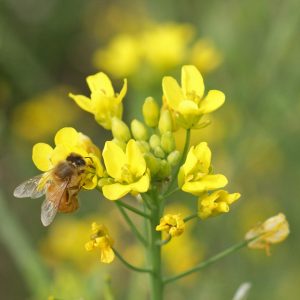
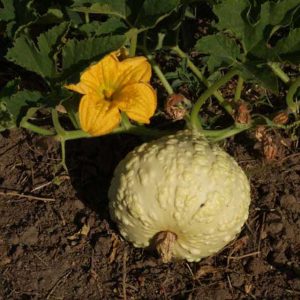
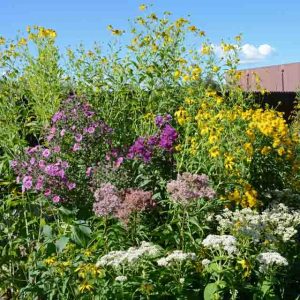
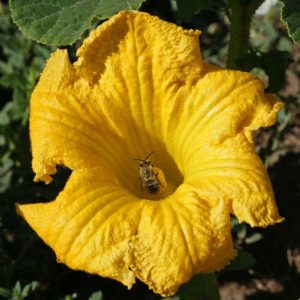
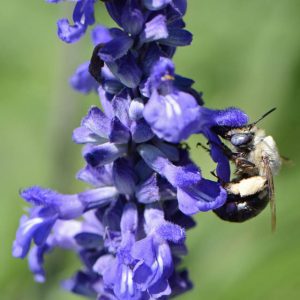
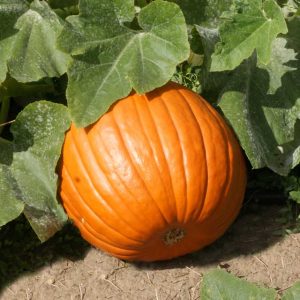
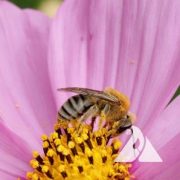
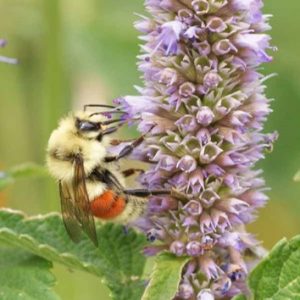


Applewood Seed Co. Announces Strategic Leadership Changes to Drive Business Growth
Applewood Seed Co., an employee-owned company, the leading supplier and wholesaler of open-pollinated flower seeds in the U.S., proudly announces two pivotal promotions within its leadership team. Mary Gomane has been promoted to Vice President of Sales & Production and Joe Eenigenburg has advanced to the role of Director of Sales & Marketing. These strategic […]
Using Flowers as Nature’s Solution to Water Conservation
In the realm of commercial landscaping, traditional turfgrass lawns still reign as the go-to for public and private projects. However in recent years, the practice of replacing turfgrass with flowers has steadily gained popularity, not only for the aesthetic appeal but specifically for the positive impact on water conservation and cost reduction.